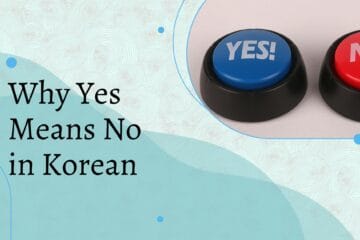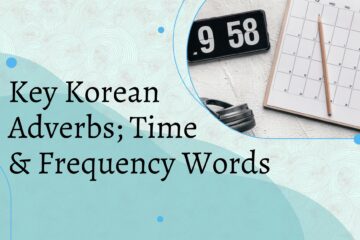This is actually a super useful particle that you’ve already been using without knowing it! The 시 particle shows up in 안녕하세요, with the literal breakdown of it being 안녕 meaning peace and 하세요 (하다 + 시 + 해요체 honorific form)

When to Use ~(으)시?
The 시 or ~(으)시 particle is only used in formal relationships. So it could be with a boss, teacher, parent, etc. or just people older than you. If you’re new to Korean honorifics, or just need a refresher than check out my post breaking it down here; with shows which to use depending on the situation and nice clear image breakdowns of honorific usage based on age.
The ~(으)시 honorific particle has a specific use case though; you use it when you are talking about/to someone you would use 존댓말 with. So if you’re talking to a friend about your teacher, you don’t use 존댓말 with the friend but because the topic is someone you would to show respect you add in the 시 honorific.
시 is only ever used when talking about someone you would be formal with, you can’t use it when talking about yourself or someone you’d use 반말 with. You add on ‘~시’ to a word ending in a vowel and ‘~으시’ to ones ending in a consonant.
4 Key Uses for 시
Just reading that might feel tricky so I’ll try to make this not too convoluted but the uses range from situations like:
- talking to (반말 person) about (존댓말 person) ex; friend about teacher, 동생 about boss
- talking to (존댓말 person) to (존댓말 person) ex; teacher about boss, coworker about elder
- just talking to (존댓말 person) ex; boss, teacher, elder, etc
- just talking to (존댓말 person) without using their name or title
So with a sentence like “grandmas got an apple” in each different use it would work out like this:
- 할머니께서 사과를 받으셔
- 할머니께서 사과를 받으세요/받으십니다
- 할머니께서 사과를 받으세요/받으십니다
- 사과를 받으세요/받으십니다
The fourth use is basically how to say ‘you’ formally in Korean! 당신 is technically the formal word for ‘you’ but it’s really only used when you want to pick a fight or are talking to your wife/husband. Since adding 시 is only used when talking to/about someone the absence of a subject makes the listener the subject. Thus making it translatable to an implied ‘you’ in English.
How to Add 시 Honorific Particle to a Sentence?
Let’s get more into how to fit 시 honorific particle into a sentence, Since it sits in-between like ‘word + 시 + formality’ it can be awkward fitting it in yourself at first. First here’s a simple template to use and then I’ll run through a couple more sentences!
- ~(으)시: xx(으)시
- ~아/어요: xx셔요
- ~ㅂ/습니다: xx십니다
- ~았/었다: xx셨다
부모님은 우리를 잘 가르치시고 싶었어: Our parents wanted to teach us well
내 부장님은 다른 부장들 좋아하시지 않아: My manager doesn’t like the other managers
선생님이 아직 논문의 등급을 않으셨어요: the teacher hasn’t graded the paper yet



2 Comments
Aurelia · December 1, 2023 at 10:45 pm
Thanks Unnie!
Becky · November 9, 2023 at 10:20 am
Wow! I had no idea, this is super useful thank you